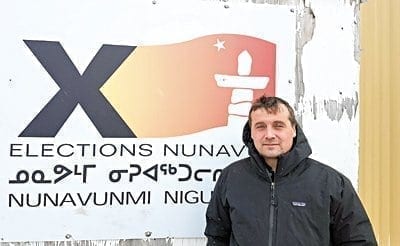Voter turnout for the 2017 territorial election fell to 65 per cent, down from 2013's 70 per cent.

Iqaluit ridings, along with Netsilik, had the lowest turnout – below 60 per cent – while Arviat South and Arviat North-Whale Cove had the highest turnout at 81 and 79 per cent respectively.
"That's something I don't have any theories on at this time," said chief electoral officer Dustin Fredlund.
"Our role is just to make sure that people can vote in a manner that is transparent and fair, that follows democratic principles. Ask me in about a month when we start looking at the actual figures, polling records and the demographics of the turnout and those type of things."
Fredlund also hadn't had the opportunity to gather anecdotal information from his returning officers.
"The mind of a voter is a mysterious thing," he said.
However, Fredlund concedes, as one Iqaluit voter noted, registered-voter lists might include deceased persons or former residents of the territory, which might lower percentages. He notes the list is updated with information shared by voters themselves, returned voter information cards, and information shared by "other sanctioned external sources, Vital Statistics provides the names of the deceased and the names of those who have moved away and have relinquished their health care card.
"So our information is only as good as their information," said Fredlund, adding a name cannot be removed from the list because of anecdotal information.
The period after an election or a plebiscite is the ideal time to compile all the information and refresh the list, he said.
The only glitch in an otherwise relatively smooth election took place in Cambridge Bay, where Jeannie Ehaloak and Pam Gross came within a two per cent margin for the seat, triggering a judicial recount. Ehaloak, who had nine more votes, and Gross have the opportunity to be present while a judge recounts all the ballots and certifies the results. That was scheduled to take place Nov. 4 in Cambridge Bay.
"If the judge certifies that it's a tie, the chief electoral officer – that's me – will order a new election for that constituency only," said Fredlund.
Fredlund did have a weather scare. Sanikiluaq, Kimmirut and Iqaluit were expecting blizzards, but the weather cooperated until after polls had closed.
"They (the communities) were shut down the day after. So we were very fortunate."
Results in some ridings did take a long time to come in, some well past midnight.
"I know the population in Nunavut out there watching probably all have a very similar question," said Fredlund.
"During the counts, election officials are required to follow guidelines and procedures and they must account for every ballot provided to the returning officer – whether rejected, spoiled, and the unused ones as well. It's not just a matter of cast ballots."
Further, Fredlund said to keep in mind some constituencies had three polls, while others have multiple communities, which increases the number of polls.
Then, Elections Nunavut in Rankin Inlet separately counts all the special ballots mailed to Rankin and those recorded numbers from the 22 constituencies need to be passed on to the returning officers.
"There's a lot of communication going back and forth, via email and via telephone. And remember there are 22 returning officers with polls closing at the same time," said Fredlund.
"If you see an election official, thank them for their hard work and dedication."